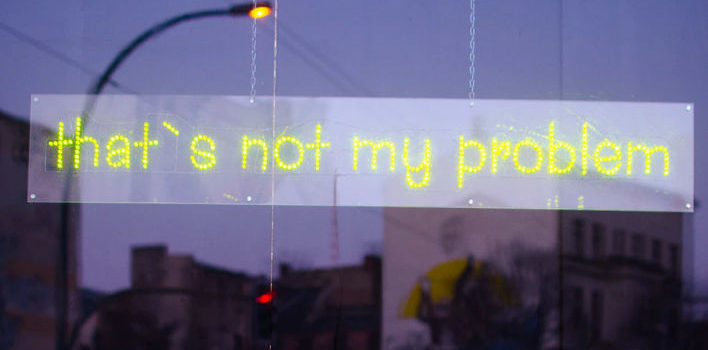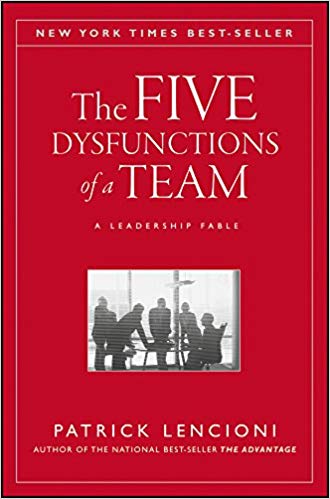

This article is an excerpt from the Shortform summary of "The Five Dysfunctions of a Team" by Patrick Lencioni. Shortform has the world's best summaries of books you should be reading.
Like this article? Sign up for a free trial here .
Does your team or workplace have avoidance of accountability? Do people not care about their work and point fingers often? How do you deal with this so you can have accountable team members? Learn tips from 5 Dysfunctions of a Team.
Effective teams hold other accountable in order to correct problematic or counterproductive behavior and maintain consistent high standards.
Dysfunctional teams, however, are unable to call out their peers for unproductive behavior and falling below standards. There is an avoidance of accountability to be responsible to everyone else on the team.
This avoidance of accountability stems from the first three dysfunctions.
- Lack of trust inhibits constructive pushback, since every criticism in such an environment would either be taken personally, cause interpersonal discomfort, or be met with defensiveness and retaliation.
- Fear of conflict makes teammates unwilling to puncture the false harmony they’ve created and shy away from any controversial topics.
Lack of commitment has the most powerful effect in fostering avoidance of accountability. Without clarity and buy-in, teammates feel they have no right to call others out over team priorities that were either 1) unclear or 2) never bought into in the first place. Moreover, when a team is suffering from the indecision that defines lack of commitment, there simply won’t be any goals or priorities to which teammates can hold each other accountable.
Avoidance of accountability leads to low standards. When team members know they won’t face peer pressure for shirking their responsibilities or delivering poor results, there’s less of an incentive to put in the effort to do a good job.
This avoidance of accountability, unsurprisingly, has a harmful effect on team performance. Mediocrity comes to set the standard across the organization as people realize that they won’t be criticized or reprimanded for poor results. Even those who might otherwise be motivated to achieve at a high level quickly become discouraged from doing so—after all, why work hard when your peers are slacking off and facing no repercussions?
In this scenario, achievement-driven individuals leave the organization, with the few high performers that remain resenting their colleagues for their poor standards and failure to adequately pull their weight. Within this vacuum of accountability, it falls to the leader to be the sole source of discipline, placing an undue burden on them and further eroding morale and group cohesion.
Avoidance of Accountability Example 1
Kathryn notes that Martin has a habit of pulling his laptop out during meetings, answering emails, and engaging in other work, instead of focusing on the discussion. This is distracting, interrupts the flow of the discussion, and signals that he is not taking his commitments to the team seriously. When Kathryn reprimands him for this behavior, the rest of the team is relieved—they had been too fearful of interpersonal discomfort to address it themselves, and so they let the destructive and problematic behavior continue.
Avoidance of Accountability Example 2
Nick does not make his team available for a meeting that Carlos has called. Not only does Nick not hold these subordinates accountable for their unresponsiveness, but Carlos does not confront Nick either.. This avoidance of accountability leads to poor performance—Carlos simply doesn’t hold the important meeting. Even worse, none of the other executives think to criticize Carlos for failing to complete a task that he had committed to.
Solving Avoidance of Accountability: Promoting Accountability
In general, avoidance of accountability can be fixed by making clear what goals the organization is meant to achieve and incentivizing individuals to work for the group rather than for themselves. For accountability, teams should engage in peer pressure tactics, which is scalable and reduces the bureaucracy needed for oversight.
Below are some tools designed to achieve this shift in behavior and remove an avoidance of accountability.
Avoidance of Accountability Strategy 1: Publication of Goals and Standards
This clarifies what the team needs to accomplish, everyone’s individual responsibilities to the team, and a code of conduct so people know how to behave.
Creating public goals and standards puts everyone on the same page. It facilitates accountability, since everyone knows what the proper measurement of success is and what each individual’s responsibility is toward the achievement of the goal.
Avoidance of Accountability Strategy 2: Team Rewards
This shifts performance incentives from individuals to teams, rewarding individuals based on how their team performs, not how they perform personally.
This discourages turf wars and rivalries, since anyone’s failure becomes everyone’s failure. There’s no point in hoarding resources for your department if it’s going to harm other departments and drag down the team as a whole. Instead, team rewards encourage cooperation and efficient pooling of resources across departments.
Avoidance of Accountability Strategy 3: The Leader’s Role
A leader must be willing to step back from being the sole source of discipline, and encourage peers to hold one another to high standards. This is more scalable and reduces the overhead needed to build high-functioning teams.
When disagreement arises, the leader must also serve as the judge to decide cases, then return power back to peer accountability.
Benefits of Accountability
Teams that make use of these practices hold each other to high standards, knowing that everyone sinks or swims together. These teams create a positive, self-reinforcing cycle, in which individuals know that they’re going to be responsible to their peers for their performance, so they work harder to deliver results.
———End of Preview———

Like what you just read? Read the rest of the world's best summary of Patrick Lencioni's "Five Dysfunctions of a Team" at Shortform . Learn the book's critical concepts in 20 minutes or less .
Here's what you'll find in our full Five Dysfunctions summary :
- What the Five Dysfunctions are
- Why absence of trust is the fundamental dysfunction
- How to get people to argue the right way
- Strategies and exercises to overcome each dysfunction






